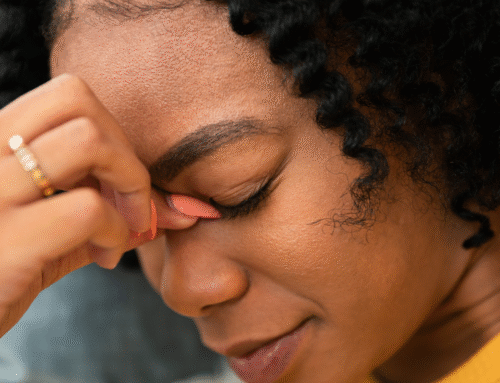Inflammation is a natural and vital part of the body’s healing process. When we injure ourselves or encounter an infection, the immune system triggers an inflammatory response to protect and repair tissue. However, when inflammation becomes chronic—lasting weeks, months, or even years—it can begin to damage the body instead of helping it heal. Conditions like arthritis, digestive disorders, skin issues, and autoimmune diseases are just a few of the many chronic health concerns rooted in ongoing inflammation.
From the lens of Chinese medicine, inflammation is not merely a physical process. It often points to deeper imbalances in the body’s internal systems—such as excessive Heat, Dampness accumulation, Qi stagnation, or Blood stasis. Unlike Western medicine, which tends to treat inflammation with anti-inflammatory drugs, Chinese medicine takes a more holistic approach, aiming to address the root cause of the inflammation and restore harmony throughout the body.
One of the primary tools we use in Chinese medicine is herbal therapy. For thousands of years, Chinese herbalists have formulated complex blends designed to clear Heat, invigorate the Blood, and eliminate toxins. For instance, herbs like Huang Qin (Scutellaria baicalensis) are known for their strong anti-inflammatory and antibacterial properties. Jin Yin Hua (honeysuckle flower) is often used to cool the body and is especially helpful for skin inflammations or sore throats associated with toxic Heat. Another valuable herb, Dan Shen (Salvia miltiorrhiza), helps improve blood circulation and reduce pain, making it useful for cardiovascular inflammation and menstrual disorders.
An herb that has gained global attention is turmeric, known in Chinese as Jiang Huang. It’s prized for its ability to move Qi and Blood while alleviating pain and swelling. While turmeric has been heavily studied in modern contexts for its curcumin content, Chinese medicine recognizes its broader energetic functions as part of a balanced formula rather than as an isolated compound.
Of course, herbs work best when combined with acupuncture. Acupuncture helps move Qi and Blood, reduce systemic and localized Heat, and calm the body’s stress response—all of which contribute to reducing inflammation. Specific acupuncture points, such as LI-11 (Quchi) and ST-36 (Zusanli), are often used in inflammatory conditions due to their ability to regulate the immune system and promote detoxification. Treatments are always customized to the individual, addressing not just the symptoms but the underlying patterns contributing to inflammation.
Beyond acupuncture and herbs, diet plays a crucial role in managing inflammation. In Chinese medicine, food is seen as a powerful tool for healing and prevention. Certain foods are considered “cooling” and help to clear excess Heat from the body. These include cucumber, watermelon, celery, mung beans, and bitter greens. Teas made from chrysanthemum flowers or honeysuckle can be soothing for those who run warm or experience skin irritations. At the same time, it’s important to avoid foods that are considered “heating” or “damp-forming,” such as fried foods, excess red meat, dairy, alcohol, and overly spicy dishes, as these can worsen inflammatory conditions.
Eating habits are just as important as food choices. Overeating, eating late at night, or eating while stressed can all tax the digestive system—particularly the Spleen in TCM theory—and contribute to internal Dampness and stagnation, which are common patterns in chronic inflammation. Mindful, regular meals made with fresh, seasonal ingredients can go a long way in supporting the body’s healing capacity.
In addition to physical treatments, lifestyle practices are essential in addressing inflammation holistically. Stress, in particular, is a major contributor to inflammation and often leads to imbalances in the Liver system. Practices such as Qi Gong, Tai Chi, meditation, and even simple breathwork help smooth the flow of Qi, reduce emotional tension, and calm the nervous system. These gentle yet powerful tools not only enhance circulation but also encourage the body’s natural detoxification processes.
Sleep is another key component. During rest, the body performs much of its internal healing work, including regulating immune function and clearing metabolic waste. In TCM, insufficient sleep weakens Yin energy and allows internal Heat to build up, which can manifest as inflammation, irritability, or even skin flare-ups. Establishing a calming nighttime routine and getting to bed by 10:00 PM can help maintain balance.
When inflammation is more localized—such as with sore joints, muscle strains, or skin eruptions—topical applications from the Chinese medicine tradition can offer relief. Herbal compresses or poultices made with ingredients like San Qi (Notoginseng), frankincense, or myrrh can help reduce swelling and promote healing. Moxibustion, a technique involving the application of heat from dried mugwort, may be used to warm the channels, invigorate Qi and Blood, and ease pain when Cold is a contributing factor.
Ultimately, healing inflammation through Chinese medicine is not about suppressing symptoms but about nurturing the body back into balance. Each person’s pattern is unique, which is why individualized care is at the heart of traditional Chinese treatment. Through a combination of herbal medicine, acupuncture, nutrition, and lifestyle practices, we can address both the root and the branch of inflammatory conditions, leading to more sustainable and meaningful healing.
If you’re living with chronic inflammation or simply want to prevent future health concerns, consider scheduling a consultation. Chinese medicine offers a gentle yet effective path toward reducing inflammation, enhancing vitality, and improving your overall well-being—naturally and holistically.







Leave A Comment